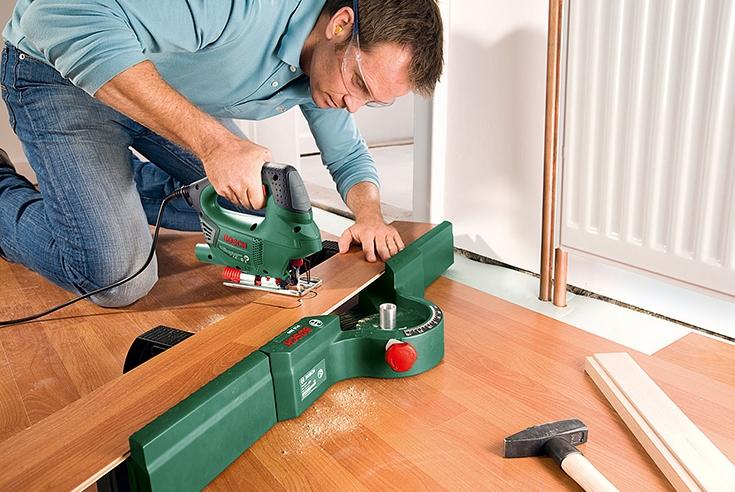The electric jigsaw is one of the most versatile cutting tools available.
It can be used to cut wood, chipboard, plywood, plastic, steel sheet, ceramics, etc. It can be used for straight or curved cuts.
The jigsaw can be used to saw an arbitrarily shaped hole in the middle of the workpiece.
By changing the angle of the jigsaw foot you can make a cut at a certain angle.
It would seem that what could be easier – just insert the file and get to work. But professionals know that without sufficient skill it is possible not only to use the jigsaw inefficiently, but also to kill the workpiece and the jigsaw itself.
Here are some useful tips on how to use the jigsaw effectively. We hope that it will help you avoid the most common mistakes.
The number one task is to prepare your workplace. First of all, it should not be forgotten that the jigsaw, it is an electrical tool, and electrical safety issues should be paramount. It is a question of the condition of the sockets, the plug, the jigsaw cord and, indeed, the electrical connections themselves inside the tool. Insulated tools up to 1000V should be available for work on electrical appliances. For domestic purposes, a variety of insulated screwdrivers, pliers and long-nose pliers with dielectric coating are sufficient. Practice shows that it is very convenient to have a measuring device (tester) in a household, and the tool is better to buy as a set of insulated tool up to 1000V.
Now for the actual work with the jigsaw. The basics: keep an eye on the condition of the saw blades. Saw blades should be replaced as soon as they become blunt. Dull saw blades do not cut well and put extra load on the jigsaw drive.
Care must be taken when selecting the saw blades. First of all, remember that there are different saw blades for different materials. There are also saw blades for thin, fast or clean cuts.
If you want to make straight cuts, you should use a wide blade – it both stabilises the jigsaw blade and gives a smoother cut.
A very common mistake made by beginners is to push the jigsaw faster, increasing the contact force of the saw blade with the material. The result will be the same – the saw blade will overheat, become dull or even break.
When you are cutting soft metals (copper, aluminum alloys) it is useful to moisten the blade with machine oil or at least water. This way it is easier to cut and the saw blade will last longer.
Trying to cut metal up to 1 mm thick is always difficult because of vibrations from the metal sheet. A very simple solution: clamp a sheet of metal between two thin sheets of plywood and saw at your own pleasure.
Try to avoid sawing in the air! Clamp the workpiece to a table with clamps. It will free your hand, give you a more precise cut and it will save you the stress of putting extra pressure on the jigsaw – it will last longer.
Important tips for choosing cutting speed:
- Wood is usually cut at maximum speed.
- Also thin alloy steel plates are cut at top speed because the steel becomes softer and more pliable as it gets hot at the point of cut. If the metal is thick, it cannot be heated and must be cut at medium or low speed. Ceramics are cut at low speed for the same reason.
- Sawing some types of plastic with a jigsaw can be problematic due to melted edges. Here’s a tip: Use a low cutting speed and a saw blade with coarse teeth.
If you need to make a long, straight cut, use a guide rail – a straight rail secured to the work piece with clamps.
When working with laminated chipboard it is important to be aware of chipping at the kerf. Here you have to choose between two factors: less splintering at the bottom, but also less cutting precision at the bottom – there is always a tendency for the saw blade to wander. If the saw blade becomes blunt or damaged, this will increase.
If you want a clean cut, disable the saw’s pendulum stroke – set it to 0. Use a clean-cut saw blade in this case. Do not use the reciprocating saw stroke when working in hard materials – this will extend the life of the saw.
Take care of the technical condition of the jigsaw: do not overheat, clean shavings regularly and lubricate the rod, pendulum, cam and pinion.
